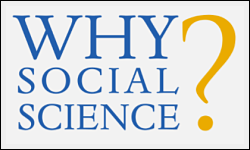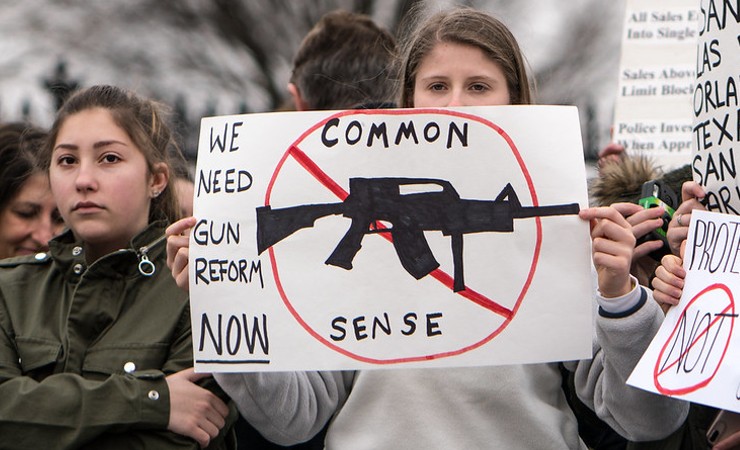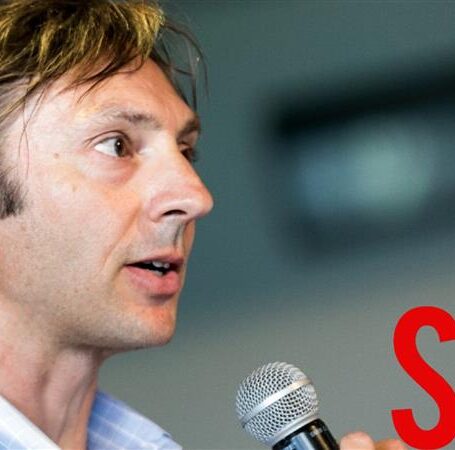Social Science Can Reduce Firearm-Related Injuries
Every day across the United States, more than 120 people die from firearm injuries. Tragic mass shootings in schools, grocery stores and places of worship, with increasing frequency, have highlighted the risk of firearm injury in every community. At the same time, daily tragedy plays out in events of interpersonal conflict that escalates between friends, intimate partners and in the form of suicide by firearm that often does not rise to the level of local news.
I have devoted the past 25 years of my career to researching this crisis. There are many facts that are known as we assess these tragedies.

We know that firearm injuries surpassed motor vehicle crash deaths in 2017 for the first time in over a generation, with firearms responsible for more than 45,000 fatalities in 2020. It is certain that firearms are now the leading cause of death among our children and teens, and that black Americans are disproportionately harmed by firearms, with data finding they are twice as likely to die by firearm than white Americans. We also know that suicide is a leading cause of death among adults over the age of 65, with 70 percent of suicides resulting from firearms. Firearm suicides also are particularly prevalent among veterans and active-duty military members with a suicide rate 1.5 times higher than the general population.
We know the status quo is failing to protect our communities, including those most vulnerable. This week, the first legislation was passed on gun safety in decades, breaking a gridlock through bipartisan action. I am often asked: why is this a science issue? What is the role of research and science in mitigating the horrific toll of gun injury? Is this not just a policy or law issue? Do we really need more research? Don’t we know what to do? Isn’t more research just a delay to action?
Firearm injury and related harms, however, are not one type of problem and they will not have one answer. It is also a false choice to suggest that we must decide between taking action and building a research and evidence base. The nation needs both action and research, and for every other major societal health challenge we have worked toward both simultaneously. The 45,222 Americans that died in 2020 by firearm fell to very different types of injuries – community violence, mass shootings, suicide, and homicide by peers and partners. Further, gun ownership is part of the cultural fabric of many in the nation, with millions of firearms in homes. This does not mean it is impossible to reduce deaths – just that success will only come with broad and varied solutions.
Thus, to mitigate harm and reduce deaths, we need policy solutions and research solutions that come through a multifaceted examination of every aspect of firearm injury and death to understand and implement programs that increase safety. Identifying what programs are necessary and effective will take the best social science researchers to lean in. There is not one solution here. Decreases in the death toll will come from a layered approach of policies and local programs, as well as supporting individual choices that favor a culture of actions that support safety.

This is a crisis that requires urgent attention from the scientific community, and social scientists have a critical role to play. Social science will aid in analyzing the complexities of the interpersonal relationships, associated disparities, culture of gun ownership, human behaviors, risk and protective factors, and race and identity groups that have both led us to this place, as well as the interventions that will lead us to a safer place.
For the most serious interpersonal challenges our society has faced over the years, we turn not only to policy, but to scientific evidence and social science for answers. In the 1960s, while engineers worked to create seatbelts and safer cars, it was social scientists that focused on a leading risk factor for car crash alcohol misuse, and through research and interventions, altered the norms and culture of drinking and driving.
As the nation mourned the Uvalde shooting victims, terrified and desperate parents around the country whispered to each other, asking whether raising the age to purchase an AR-15 would have prevented the tragedy. While this is an unanswered question, historical data may be informative and could provide a path to understanding.
In the late 1990s, it was social science research that identified the concept of raising the drinking age to 21 to reduce car crashes, and social scientists found that this policy change decreased teen alcohol-related crashes by more than 30 percent. It was social scientists that understood the human interactions of multiple teenagers in a car was an outsized risk and put forth graduated driver licensing laws that have been attributed to another 30 percent reduction in teen driving deaths. A layered approach of social and behavioral study and evidence-based programs alongside improvements in safety of cars and roads led to safer travel by car that we enjoy today.
In the 1980s, while immunology and virology provided molecular information on HIV, it was social scientists that provided understanding of the communities impacted, the risks involved and the long-term societal and economic impacts and disparities. As deaths from firearms now surpass both deaths from HIV and car crashes, it is the time for social science to come of age in the nuances incorporating firearm injury into rigorous inquiry.
The field of firearm injury prevention research is still in its infancy, with barely five years of increased federal funding at levels that allow rigorous study. It will require a large, concerted effort to create an evidence base by social scientists, as well as colleagues across disciplines such as public policy, public health, medicine, engineering, and criminal justice. To the extent that policy is part of a mitigating solution, it is the researchers who will create the evidence that any solid policy will be based on.
The application of cutting-edge methodology, knowledge of population study, and behavioral interactions of families and communities will advance the evidence base needed to turn the corner on this crisis.
Social scientists, the time to engage is now.
























































































